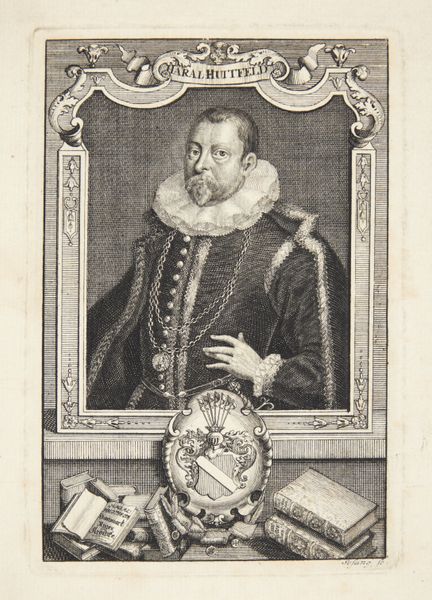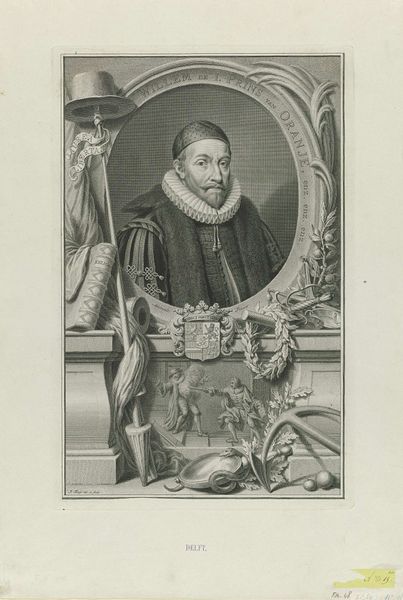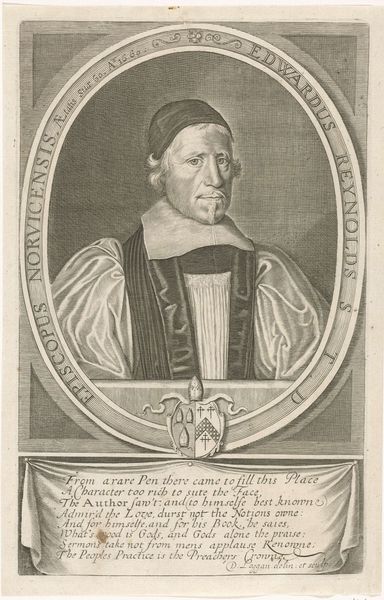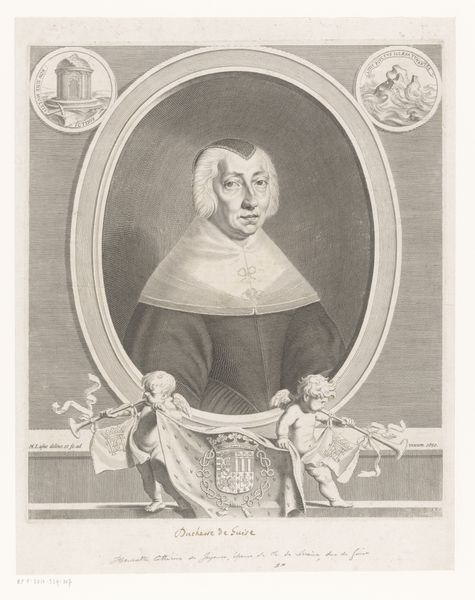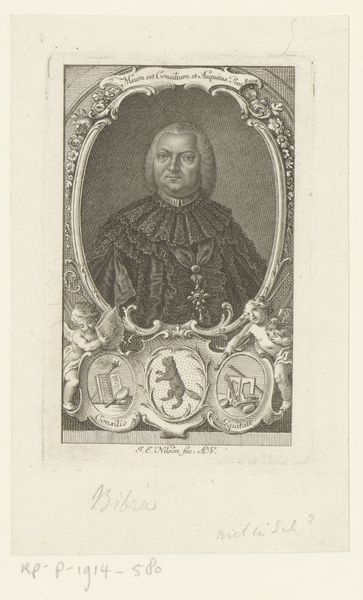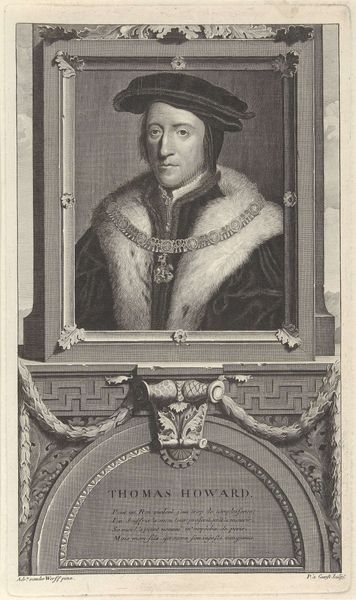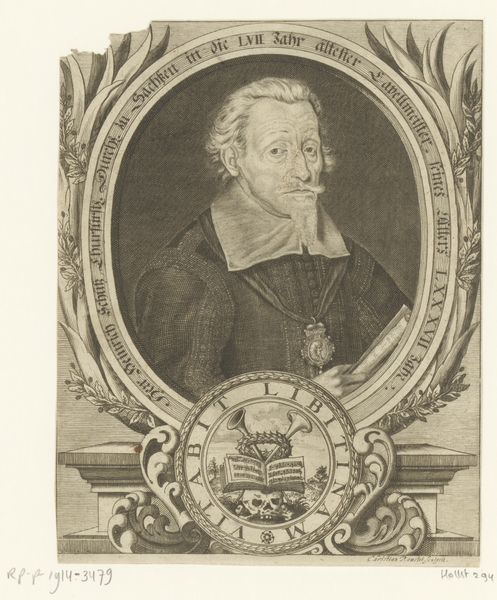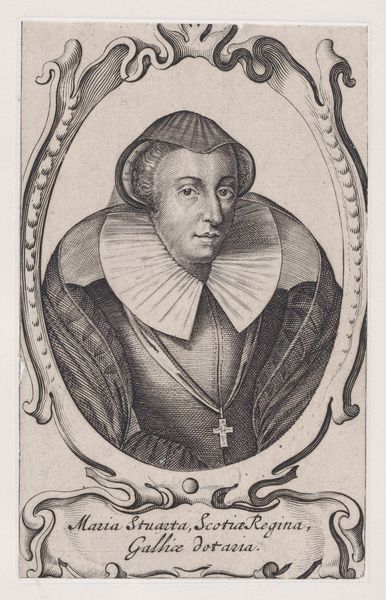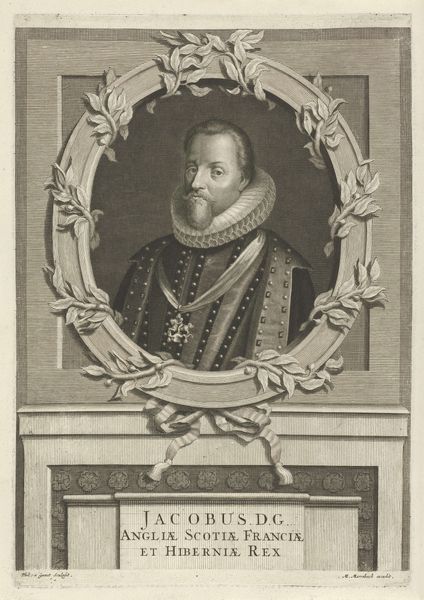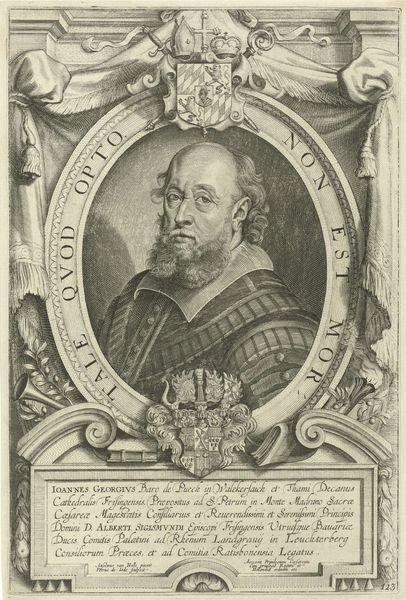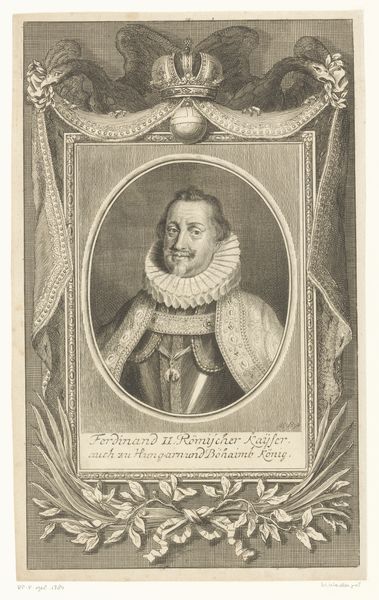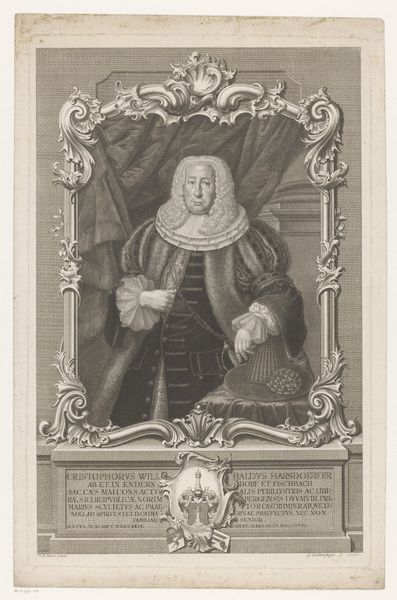
print, engraving
#
portrait
# print
#
old engraving style
#
caricature
#
portrait reference
#
portrait drawing
#
history-painting
#
engraving
Dimensions: height 355 mm, width 228 mm
Copyright: Rijks Museum: Open Domain
Curator: The determined gaze of Louise de Coligny is arresting. This portrait, engraved in 1755 by Jacob Houbraken, depicts her surrounded by symbols of family and lineage. What are your initial thoughts? Editor: My first impression is that while this is intended to be a representation of power and prestige, there is an undeniable air of vulnerability to the piece. The grey coloring and old engraving style suggests a stark story to be told. Curator: Absolutely. The details embedded within—the floral decorations, her elegant collar, and even the inscription noting her role as mother to Frederik Hendrik—speak volumes about societal expectations and the projection of female authority through lineage. Editor: Look at the scene represented at the bottom. The violence stands out and brings forward ideas about survival. Note the depiction of conflict right below the subject. Is this a reminder of the societal turmoil she was likely engaged with, or an assertion of power despite said circumstances? Curator: Perhaps it’s both. Houbraken uses familiar symbolic tropes for portraiture, sure, but it may also serve to suggest strength forged in conflict. Her family were significant players in tumultuous political conflicts of the period. Symbols and personal narratives entwined together can often be viewed as one. Editor: It also highlights the ways in which powerful women were often defined through their relationships to powerful men – as daughter, wife, or mother. This portrait becomes a complex document of the constraints placed upon them, even as they wield influence. Curator: The composition makes me wonder about the continuous presence of women throughout history and the way that memory, identity, and power get recorded. We often forget the weight and significance of those women until presented with visuals of their status in these artworks. Editor: Agreed. Engaging with portraits like this encourages critical examination and invites important reflections. It encourages looking beyond the surface to challenge narratives of marginalization. Curator: And so it is. By diving into this image, the social dynamics of its time echo into ours. Editor: Exactly, revealing that art remains relevant not for its aesthetics alone, but its engagement with ongoing social movements.
Comments
No comments
Be the first to comment and join the conversation on the ultimate creative platform.
